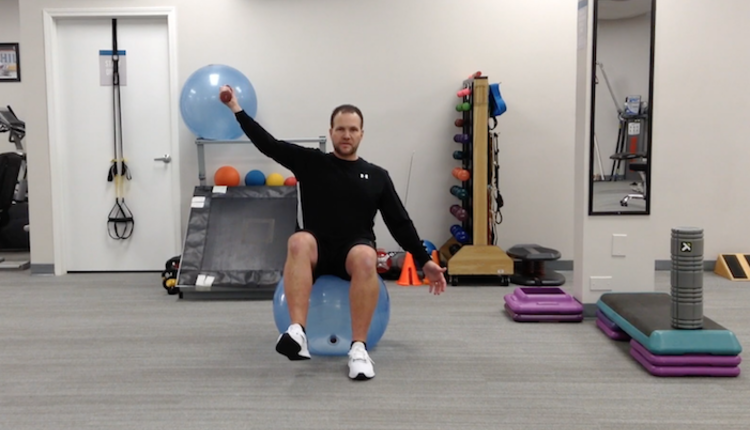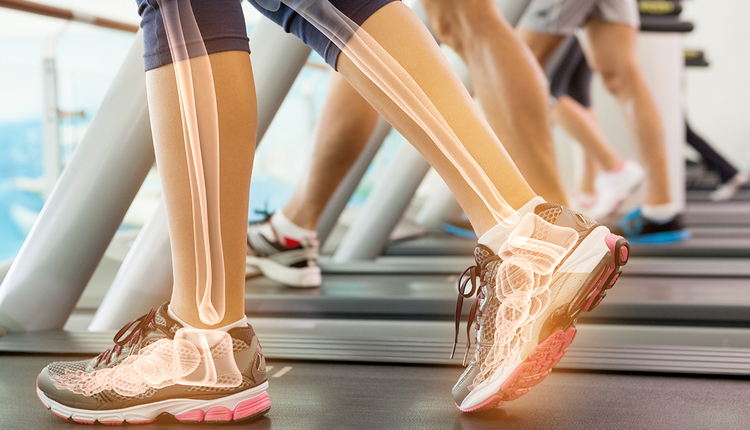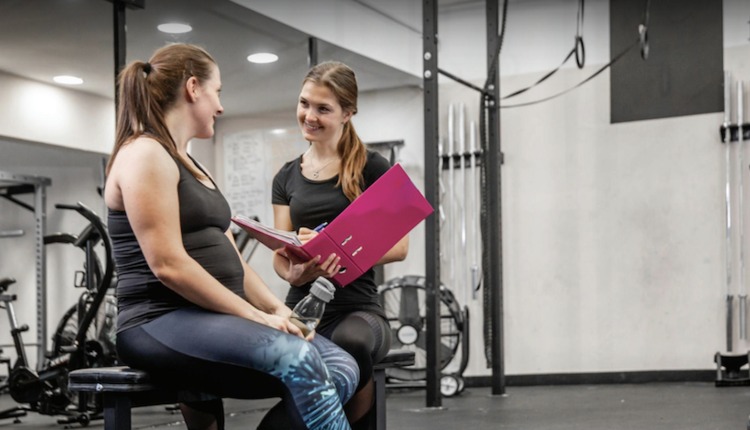
What ideas come to mind when you consider “workout recovery strategies?” For many, the answer is yoga, foam rolling, saunas and sleep. All of these ideas have a place in fitness. These techniques, however, are not the only solutions to restore energy, stamina, strength and power. If your clients are searching for different ideas that fit their lifestyle preferences, give the following top 5 overlooked recovery strategies a try!
1. Cardio machine-based active recovery
Who it is for: Clients who are driven by gym-based workouts 7 days/week
How to: Follow this workout:
- Mode: The day after leg day, use a bike. The day after upper body day, use an upper body ergometer. A rowing ergometer, elliptical with arms, or Assault bike can provide an alternative on either day.
- Duration: 5-20 minutes, depending on client’s fitness level and time available.
- Intensity: Heart rate below anaerobic threshold. Estimate anaerobic threshold as 180-age.
- Resistance: Set resistance to the maximum resistance that can be maintained at a steady pace for the entire duration. Pace for a bike should be 20-30 RPM.
Why it works: The strategy forces blood, oxygen and nutrients into the muscles that worked hard the prior day. Since there is no eccentric phase, the cardiovascular programming minimizes delayed onset muscle soreness (DOMS), while promoting recovery.
2: Post-workout nutrient timing
Who it is for: Clients who work out for at least 45 minutes at a moderate and/or high intensity
How to: Within 2 hours post-workout consume both carbohydrates and protein in a 3:1 or 4:1 ratio (i.e. 30-40 grams carbohydrate:10 grams protein). Examples include fruit and protein powder smoothies, Greek yogurt with granola, chocolate milk, a turkey sandwich or rice with a lean protein source.
Why it works: Restoring glycogen to avoid post-workout brain fog, midnight munchies and a generally drained feeling relies on food-based fuel. The two hour post-workout period is often called the “anabolic window.” Two hours post-workout, insulin sensitivity, growth hormone and testosterone are all elevated, which primes metabolism to direct food toward muscle repair and glycogen restoration. The result is restoring energy for daily function and future workouts. When exact amounts are fine-tuned for the individual, the strategy can also be used to support muscle gain and weight loss goals.
3: Hydration contents
Who it is for: Clients who sweat when they workout
How to: First, consider quantity. The average adult fitness enthusiast should drink somewhere between half their body weight in ounces to one gallon per day. For example, a 160-pound active adult typically needs 80 oz – 128 oz of water per day.
Next, add electrolytes. The general sports nutrition recommendation per liter (34 oz) is:
- Sodium: 300-700 mg
- Potassium: 100-200 mg
- Magnesium: 10-100 mg
- Calcium: 20-150 mg
Electrolyte amounts may need individual variation, and should also be adjusted for other supplements or multi-minerals that the client is already consuming.
Why it works: At the microscopic level, neuromuscular junctions rely on nervous system efficiency and muscle/fascia ability to respond. Having enough fluid helps decrease muscle and fascia friction, so the tissues can respond to nervous system signals. The mineral-based electrolytes help the nervous system fire efficiently. When fluid and electrolyte balance are off, system efficiency decreases, which leads to muscle cramps.
4. Box breathing
Who it is for: Clients who experience frequent stress of any kind
How to: Follow these steps:
- Breathe in for 4 seconds. Focus on expanding the lower ribcage area.
- Hold the breath for 4 seconds
- Breathe out for 4 seconds. Focus on moving the air out of the lower ribcage area.
- Wait 4 seconds before inhaling again 5. Repeat 4-10 times
Why it works: Deep breathing can help restore autonomic nervous system balance by stimulating the vagus nerve. Vagus nerve stimulation decreases heart rate and respiratory rate while elevating the parasympathetic nervous system activity. The parasympathetic nervous system is the “rest and digest” system that allows the body to rest and restore.
5. Increase sleep efficiency
Who it is for: Anyone who doesn’t have time to sleep 8-10 hours each night
How to: There are several ways to increase sleep efficiency. Have your client pick a few of the following tips that are most congruent to their lifestyle preferences:
- Set a consistent bed time and wind down routine
- Turn off all electrical devices at least an hour before bed
- Set do-not-disturb cell phone sleep timers to match sleep schedule
- Get blackout curtains to minimize external light
- Turn on a fan to generate white noise
- Include a 3-5 minute static stretching routine before bed
- Try topical magnesium on the soles of the feet
Why it works: These strategies promote the normal circadian rhythm, sleep brain wave timing, and hormonal timing regulation that lead to feeling refreshed, repairing workout-induced muscle breakdown, and restoring nerve firing speed needed for endurance, strength and power workouts.
Next steps
If you train regularly active people, share these ideas with them. Collaborate on a few lifestyle-congruent ideas to help individualize and optimize recovery strategies. As you help clients discover the lifestyle and fitness-boosting energy that results, share! Let us know what your clients’ favorites are!
Dr. Meredith Butulis, DPT, OCS, CEP, CSCS, CPT, PES, CES, BCS, Pilates-certified, Yoga-certified, has been working in the fitness and rehabilitation fields since 1998. She is the creator of the Fitness Comeback Coaching Certification, author of the Mobility | Stability Equation series, Host of the “Fitness Comeback Coaching Podcast,” and Assistant Professor the State College of Florida. She shares her background to help us reflect on our professional fitness practices from new perspectives that can help us all grow together in the industry. Instagram: @doc.mnb



















